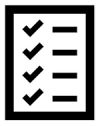Objectives
By the end of this module, you should be able to
- Outline and explain the 10 myths of entrepreneurship and relate these myths to your own experience
- Summarise your own skills, contacts and interests to help guide you in coming up with a business idea
- Explain why the LEAN startup method is employed
- Outline and understand the main steps in the LEAN startup method
Welcome to Navigate’s Startup Course! Over the next 10 modules, this course will help you develop an evidence-based business model for the Western Newfoundland environment, and to help develop the skills that make people entrepreneurial. Starting a business is no easy task, but the first steps of this journey are outlined in this course. Newfoundland has a growing startup scene, and through some hard work, you can be part of it and help make our province a better place to live!
There have been many definitions of entrepreneurship, with too many to discuss here. Some people simply equate entrepreneurs with small business owners. While this is partially correct, there is more to it than this. One of the most accepted definitions of entrepreneurship is the “pursuit of opportunity beyond resources controlled” – Howard Stevenson.
This definition suggests that there is an element of drive to pursue an opportunity. This definition emphasises that entrepreneurs must work iteratively to obtain the resources to fulfill this opportunity, since they do not possess these resources at the start. To begin this course, we will look a little bit at some of the behaviours that fall within these aspects of this definition.
What else do you think of when you think about “entrepreneurship”? Are there certain processes or behaviours that come to mind? Which of these behaviours are more successful in the development of a successful startup? What kinds of opportunities are worth pursuing?
The answers to these questions have plagued entrepreneurs, policy makers and scholars alike. The subsequent research in answering these questions has debunked many myths of entrepreneurship. The following video discusses some of these myths. Have a look and consider what myths you once believed to be true. What beliefs can you change as you pursue your startup?
As you might have seen from the video, some of these myths are surprising and counterintuitive. Some also open our eyes to new ways of thinking. To help us work through some of these entrepreneurial behaviours, we will start with creating an inventory of our own skills and contacts.
Since this course is designed for those who may not yet have a business idea, modules 1 and 3 are dedicated to helping you come up with an idea. However, even if you have an idea at this point in the course, you should be able to use these exercises to help further develop that idea.
To begin this process, let’s look at one of the points outlined in the above video. Research has found that entrepreneurs engage in effectual thinking, as suggested by Saras Sarasvathy. This type of thinking begins with the entrepreneur acknowledging their own given and current set of means, and move into action based on those means. This requires action and execution without as much formal planning as once thought, and it requires that one not to wait until all the “required” means for an idea are acquired. An entrepreneur’s goals emerge through ongoing action and the development of new means and a new picture of what is possible!
Let’s take a look at your own means and establish an inventory. There is a worksheet attached here for you to fill out to help with this. We will refer to this inventory again next module, so keep it handy.
Who are you?
Being entrepreneurial means that you should play to your strengths and be aware of your weaknesses. To define who you are, let’s focus on your tastes, traits, and abilities. These components allow you to figure out what interests you and what things you enjoy doing. It also lets you consider what type of worker you are, or what types of traits you possess in relation to your work. Ask yourself the following questions:
- What things interest you?
- What would you for a living if money were no object?
- What problems in your own life would you like to solve?
- What type of day-to-day work would you like to complete?
- What makes you feel fulfilled?
- What is your favourite part of your current or previous jobs?
- What do you feel are your most dominant traits?
- Are you creative?
- What traits do you have related to your work?
- What traits do you have related to your personal life?
Who do you know?
Who you know is also important in the development of a startup. Entrepreneurs often turn to others to help connect them with resources or other people that have skills in complementary areas. Combining your means with those of others greatly helps in developing new means. It also helps drive innovation by having an extra viewpoint towards developing your startup. Consider the following questions:
- Who are your closest friends and what types of connections do they have that might be useful?
- What types of volunteer groups, sports clubs, or other interest groups are you part of?
- Who are your coworkers and how might they help in develop a business?
- What other contacts have you developed through your professional experience?
- What other contacts have you developed through your social life and pass times?
What do you know?
In establishing what you know, we will focus on your education, training, areas of expertise, and your knowledge. Asking questions about these areas allow us to consider transferable and marketable skills that we might be able to unleash onto our startups. Consider the following questions?
- Do you have any formal education? If so, in what field? What skills are required for this field?
- What type of job experience do you have? What types of tasks did you handle and what skills did you learn?
- What would you define as your area(s) of expertise?
- Is there anything about your pastimes that you are particularly knowledgeable about?
- Do you have any knowledge that your friends or family would say that you take for granted?
- What other types of training do you have?
- Can you think of any other marketable skills that you possess?
The LEAN method was a response to a few unnecessary challenges faced by entrepreneurs. The first was due to the level of risk attached to a startup. While startups continue to possess risk (and many still fail), the LEAN method was developed to ensure that startups “fail” early and cheaply. However, we should not think of early lessons as failures. This method allows entrepreneurs to test ideas early and adapt these ideas based on discussing their business ideas with potential customers. This is approach is much more attractive than investing a lot of money without knowing if a product or service is appealing to a customer!
Second, the LEAN method moves away from traditional business plans that are often 30-40 pages. While there is a time and place for a business plan, they are large, static projects. Many have also never seen the “light of day”, meaning that they have never been tested against real customers. The LEAN method allows us to test products early and record what we have learned through a tool called the Business Model Canvas. This tool is designed to clearly articulate a business model, and is easier and faster to work on and change our model based on what we learn. Through using a tool that is faster to work with, entrepreneurs are also more likely to change their ideas and be nimbler. Imagine if you had to make constant changes (or rewrite) a 30-page business plan! You would be much less likely to do it, and thus more attached or stuck with your original ideas.
Third, as entrepreneurs, we should not think like managers in large companies (as outlined last module), and we shouldn’t be treating small companies like large companies. This is because small startups are those companies searching for a business model, while large companies are executing a busines model. These points can be summarized in the following video by Steve Blank. He is one of the founding proponents of the LEAN startup method, and does a great job explaining its components. You will notice that many resources in the course are from him, and for good reason!
To gain some more details on the LEAN startup method and its implications, you may wish to watch this video that summarize the LEAN startup method written by Eric Ries.
Finally, you may wish to also read this article by Steve Blank, which was one of the first to discuss the implications of this method for entrepreneurs.

As we focus on the LEAN process, you may wonder what the applications are for the region of Western Newfoundland. While the LEAN process has been designed for software startups, the principles and practices can be applied across several sectors – it just takes some creativity!
Let us look at an example from tourism. Suppose you wish to start a venture that takes people on ATV tours near Gros Morne National Park. Using the more “traditional” approach, an operator would do some secondary desk research and write a busines plan for funding. As we mentioned above, these plans can be 30 pages of work, and often the entrepreneur is simply hoping that the plan is “right”! If the entrepreneur gets funding, then they buy all the assets they will need (ATVs, equipment, etc.) before ever seeing their first customer. They may be successful, but they may flop!

The LEAN method would have the entrepreneur create a minimum viable product (MVP) and “test” the market with their ideal customers first. This would occur without any large investment. The entrepreneur might do this through several different ways. They may borrow an ATV and take some friends on a “mock” trip to get their feedback. They may also build a website to show a trip itinerary, combined with photos from the planned route and prices to try and gain interest from tourists and locals. From practices like this, they can tweak or change their idea based on what they learn, and develop an idea that has had much more contact with customers. They are more likely to adjust their idea since they have not written a huge business plan. Only after several iterations of this cycle will they look for funding, and they are arguably much more ready to start their business venture, and less likely to fail.

Complete the “Inventory of You” table. What types of business ideas are interesting to you? What types of value can your experience or contacts bring to your idea? Are there any obvious ideas that you can begin to implement right now? If so, keep this in mind for the next module on ideation.

